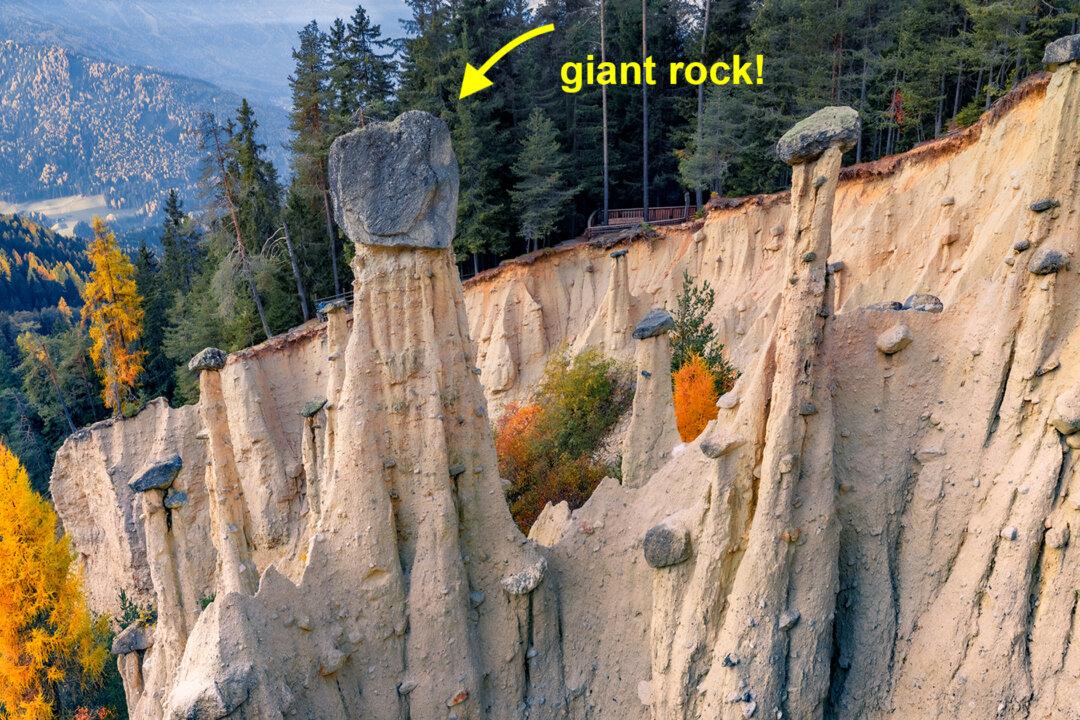Disclaimer: This article was published in 2023. Some information may no longer be current.
Land deep in a forest on the border of Italy and Austria, and you’ll discover an otherworldly range of clay structures that look like an army of pyramids, topped by little hats.






